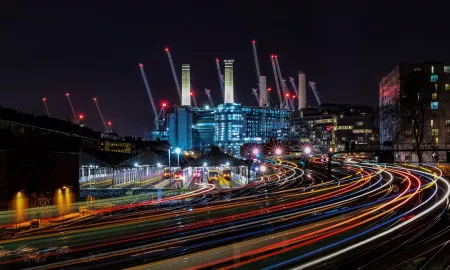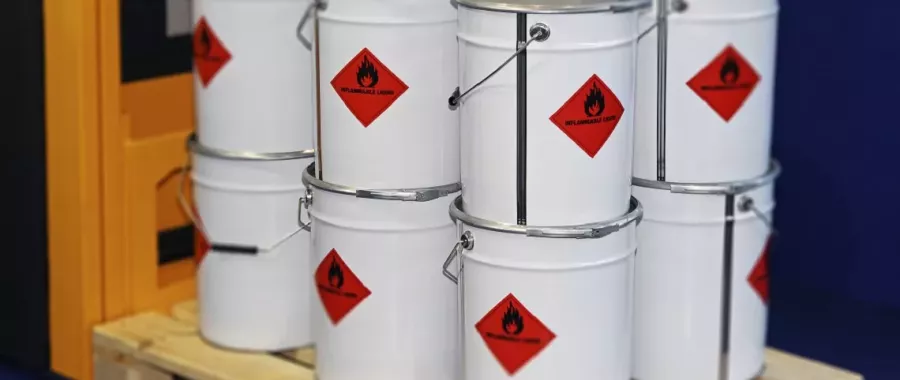There are a variety of materials commonly found within the rail environment which are classified as hazardous materials The presence of such materials may pose a risk to the health of staff or members of the public, and while some are fairly innocuous unless disturbed or released, others present a greater risk due to their presence.

There are a variety of materials commonly found within the rail environment which are classified as hazardous materials. The presence of such materials may pose a risk to the health of staff or members of the public, and while some are fairly innocuous unless disturbed or released, others present a greater risk due to their presence.
Many hazards are due to historic methods of construction, but others will be due to subsequent site usage or waste disposal.
To give a brief overview of the hazards that may be on your site, hazards can include:
Paints containing lead, cadmium, chromium or arsenic
- The Control of Lead at Work Regulations places a duty on the employer to make a ‘suitable and sufficient’ risk assessment if an employee’s exposure to lead is liable to be significant. The employer must also identify and implement measures to prevent or adequately control exposure.
- Paint sampling on over-bridges, on platform bridges and station canopies identified a number of structures painting with coatings containing high levels of lead and other metals.
Wall and ceiling plaster containing animal hair
- Prior to the introduction of drywall plaster board in the late 1930’s, animal hair was often added to basic lime plaster help bind the plaster together and to provide a degree of additional reinforcement.
- Due to the age and nature of much of the plaster found in old buildings, there is a risk that the animal hair used may contain spores of the Bacillus anthracis Contact with these spores results in the infection known as Anthrax.
Oils, paints, bituminous felts and components containing PCBs
- PCB refers to a range of chemicals called Polychlorinated biphenyls that are entirely man-made. As a stable compound with unique properties, such as resistant to both acids and alkalis, electrically insulating with thermal stability, as well as soluble in most oils, fats and organic solvents, they have been widely used as additives in a variety of applications.
- Although banned since late 1980s, PCBs are still found in insulating oils in electrical transformed – originally used to prolong life of oil and reduce flammability.
- Chronic low level exposure to PCBs has been shown to cause long term liver damage, development problems, reproductive issues and cancer, in addition to other health effects such as acne, confusion, dizziness and memory loss.
- Under current UK legislation [The Environmental Protection (Disposal of Polychlorinated Biphenyls and other Dangerous Substances) (England and Wales) Regulations 2000] you can continue to use equipment if the fluid in the transformer has a PCB concentration below 500 parts per million (0.05%).
Biohazards, moulds and fungi
- Examples of biohazards commonly encountered include bodily fluids, human tissue and blood, human/animal waste and waste products from medical/healthcare use, many of which fall under the Control of Substances Hazardous to Health (Amendment) Regulations 2004 (COSHH).
- Other biological materials commonly found in buildings, such as moulds, yeasts and fungi also pose a risk to health.
Dusts and debris
- Dusts and debris within buildings and premises can contain harmful compounds which may pose a health risk if inhaled, ingested or come into contact with exposed skin. These dusts may be due to degradation of the fabric of the building or due to activities which have taken place over time, such as combustion soot in roof spaces/attics and on high level gantries, chemical residues in plant room or deposits in HVAC ductwork.
Painting and Paint Stripping Hazards
There may be many hazardous substances associated with paint and paint stripping products, depending on the type of products in use. Two common uses include isocyanates present in 2-pack paint and dichloromethane (DCM) present in paint strippers.
Health effects of exposure to isocyanates include irritation to the mucous membranes, eyes, skin and respiratory tracts, causing bronchitis, chest tightness and difficulty breathing. The main effects of hazardous exposures are occupational asthma and other lung problems.
DCM is a colourless volatile liquid with a sweet, penetrating, ether-like odour. DCM has various industrial uses and can be used as a solvent in paint removers.
Exposure and health effects
Exposure to DCM can be via inhalation, skin absorption and through eye contact.
Inhalation is narcotic in high concentrations, and toxic upon inhalation which can even cause death in extreme circumstances. Inhalation exposure irritates nose and throat and affects the central nervous system
Skin absorption does not have harmful effects, but can contribute to overall body burden. Severe skin exposure can cause pain, redness, swelling and prolonged dermal contact may produce chemical burns.
High concentration of DCM vapours can cause moderate to severe eye irritation. Splashes to the eye can cause burning pain, inflammation of the eye surface and iris, as well as soreness of the eye.
Workplace Exposure Limits (WELs), as well as Biological Monitoring Guidance Values (BMGV) are established for both DCMs and isocyanates. Biological monitoring can be a very useful complementary technique to air monitoring when air sampling techniques alone may not give a reliable indication of exposure, as the measurements reflect absorption of a substance by all routes.
Using the hierarchy of control, you should:
- Eliminate: Do not use a products that contain DCM or isocyanates.
- Substitute: Substitute for a less hazardous substance
- Engineering Controls: Consider enclosing the process and/or using Local Exhaust Ventilation
- Administrative controls: Change the way people work
- PPE: Wear suitable protective clothing and RPE, if engineering/administrative controls are not adequate on their own
If you would like more information about Hazardous Materials Surveys or need to discuss any issues, please get in touch with one of our experts by calling 0845 603 2112 or using the contact form.
Want to find out more about SOCOTEC's services?

You might also like






Add new comment